I am a bit of a Grinch when it comes to Christmas and often one of the things which pulls me our of my un-festive slump is our Ceratopetalum gummiferum or native Christmas Bush. This year I was a little late, as many have finished thier show by the time Christmas actually arrives. However, I found four beautiful specimens in peoples front gardens not too far from my office, so thank-you to all of you which can grow this stunning small native tree and place it somewhere for passers by to enjoy.
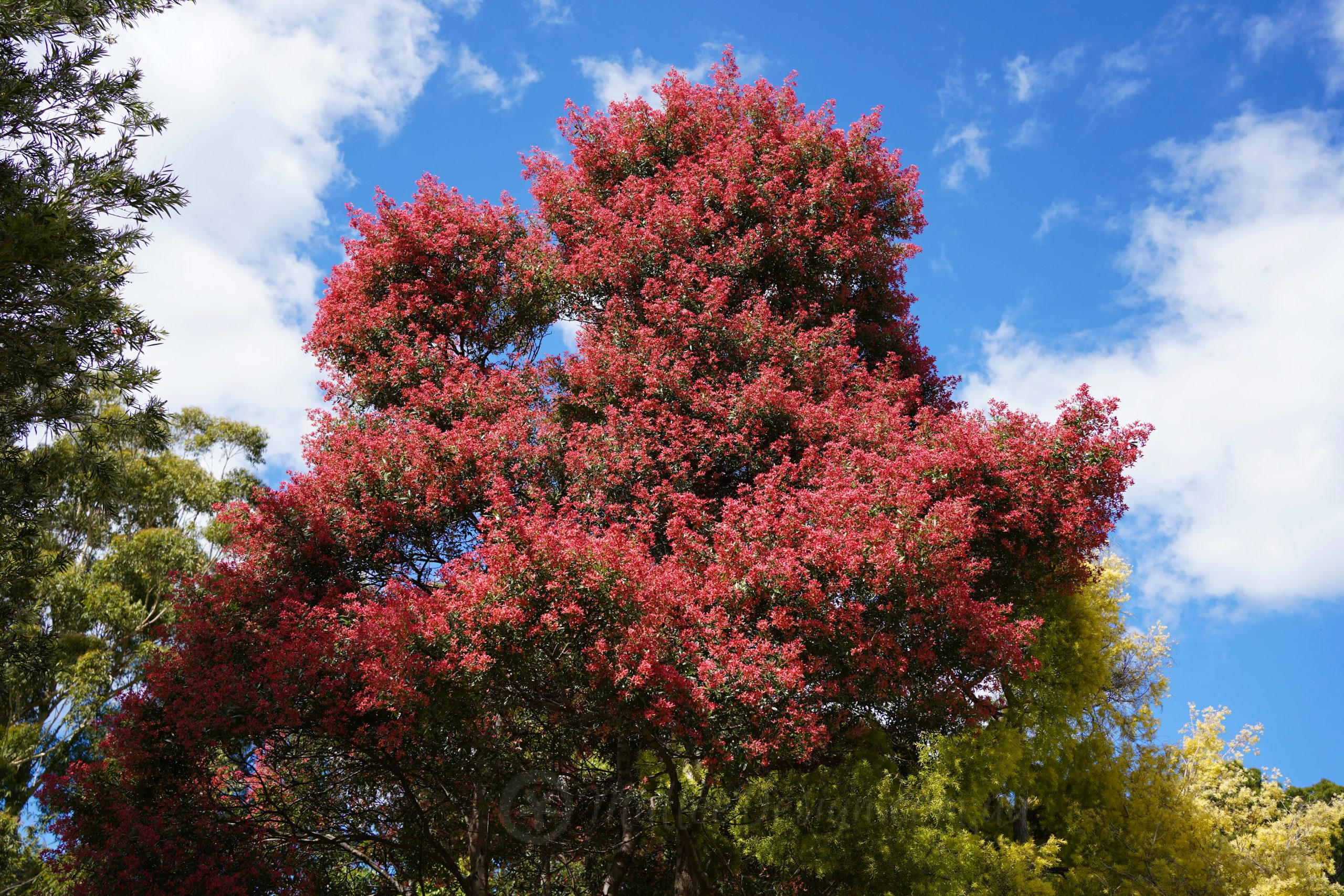
The red ‘flowers’ aren’t actually flowers but the bracts of the plant; modified leaves sit under the flowers. The bracts start off as white and and as each one dies its calyx enlarges and turns red and papery, looking like four or five petals. The real flowers are small, white and star-shaped and occur in spring.

One of my favourite things about this native is that it makes a great long-lasting cut flower for the Christmas table, showy greens and reds that are the perfect colours. Make sure you keep an eye on the water, they like to stay hydrated, which will make them last longer.
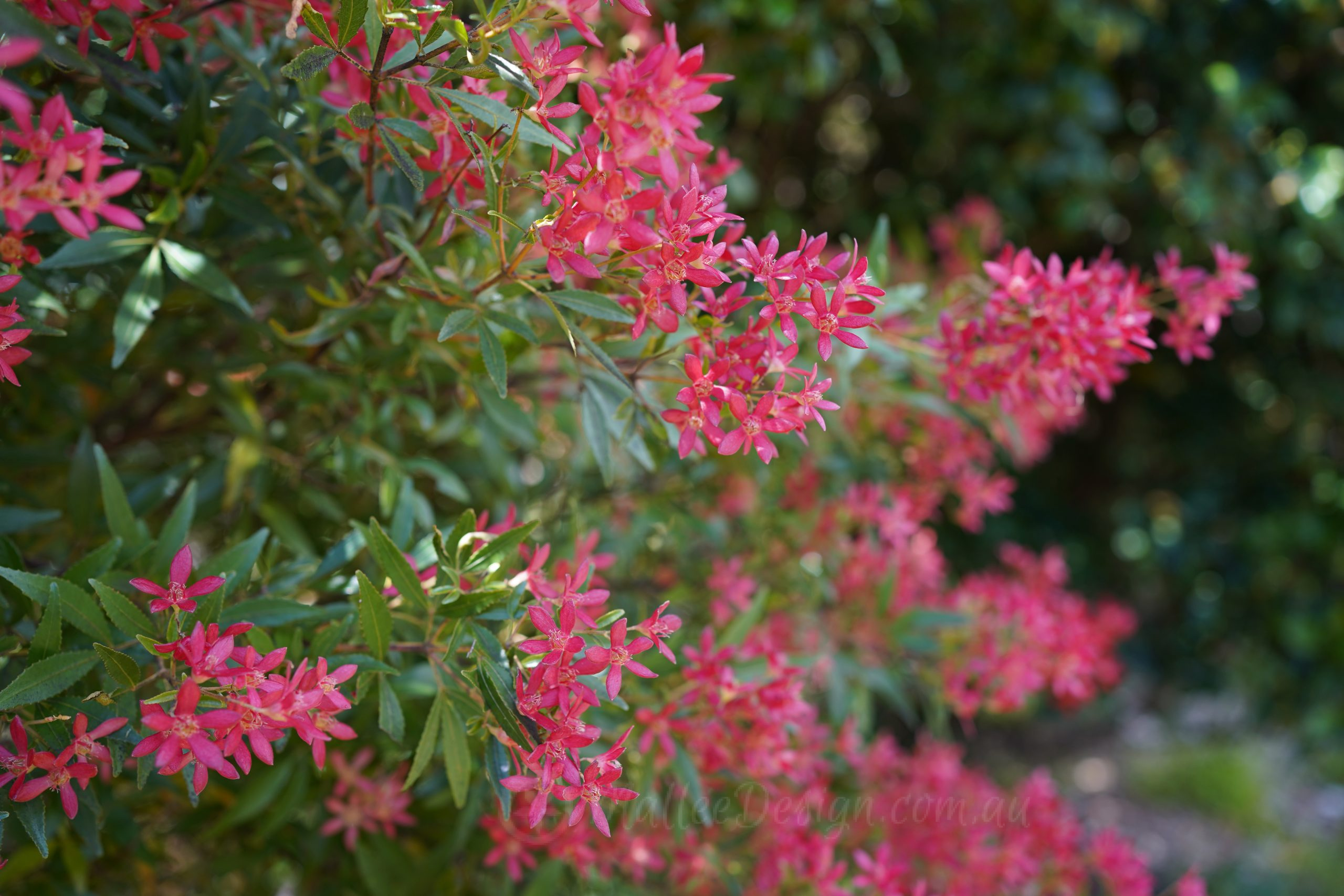
There can be a bit of variation in the flower colour depending on whether you’re growing the straight species (Ceratopetalum gummiferum) or one of the cultivars. Cultivars like ‘Albury’s Red Red Red’ and ‘Johana’s Christmas’ have even richer scarlet bracts. Something else which can affect the flower colour is the ph of the soil, they are a little like Hydrangeas in that regard. The reds also change with the angle of the sun hitting them too so in the shade they appear to be more pink than bright orangey red.
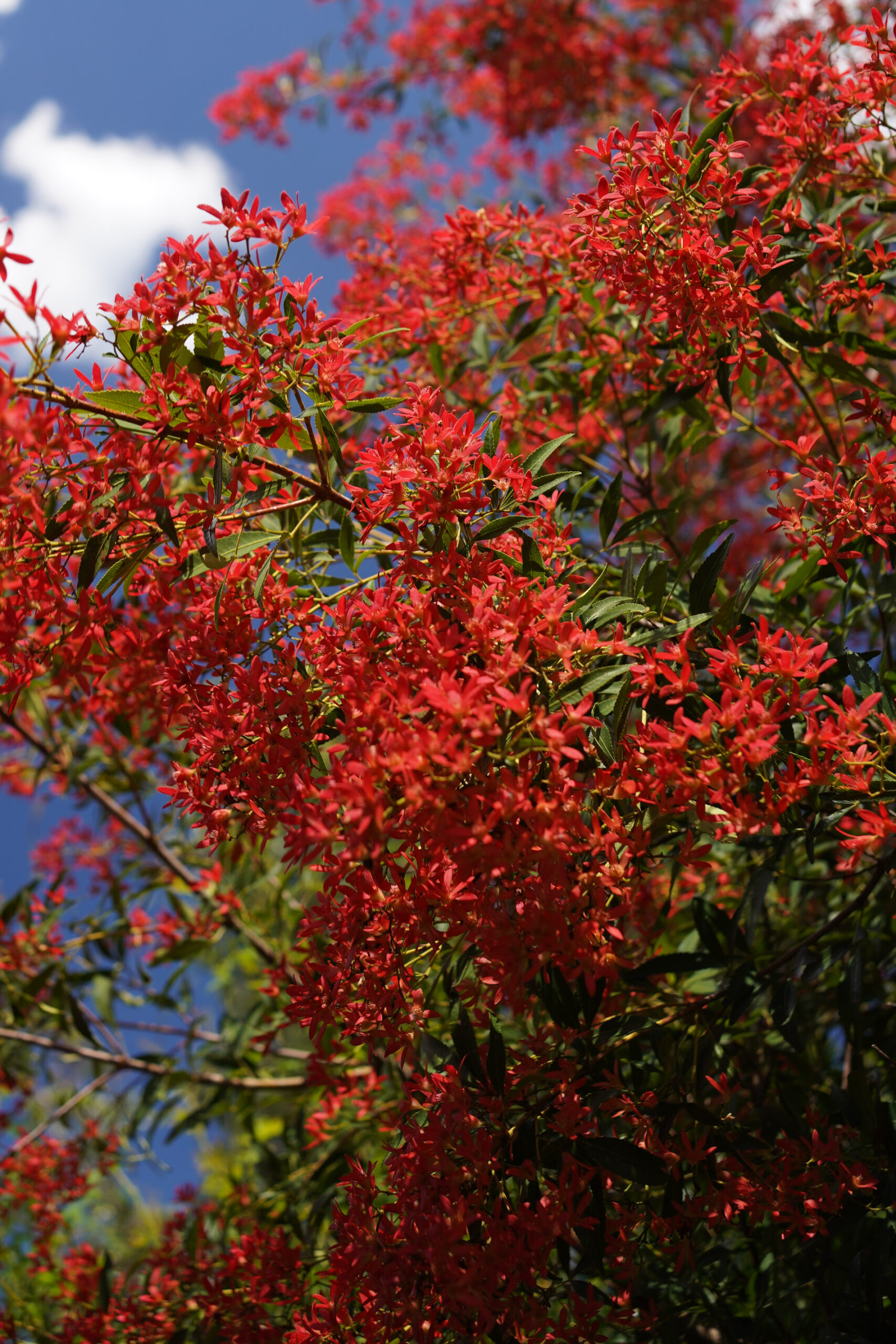
If using in the garden Christmas bush likes well drained soil, regular water in hot weather, and full sun or part shade, they also need a protected position which is sheltered from strong wind. They do not enjoy heavy clay soils very much especially if the soil remains waterlogged for any period of time. I have given up trying to grow them in my Wollongong clay based soil. All of the specimens in these photos were planted on a slope.
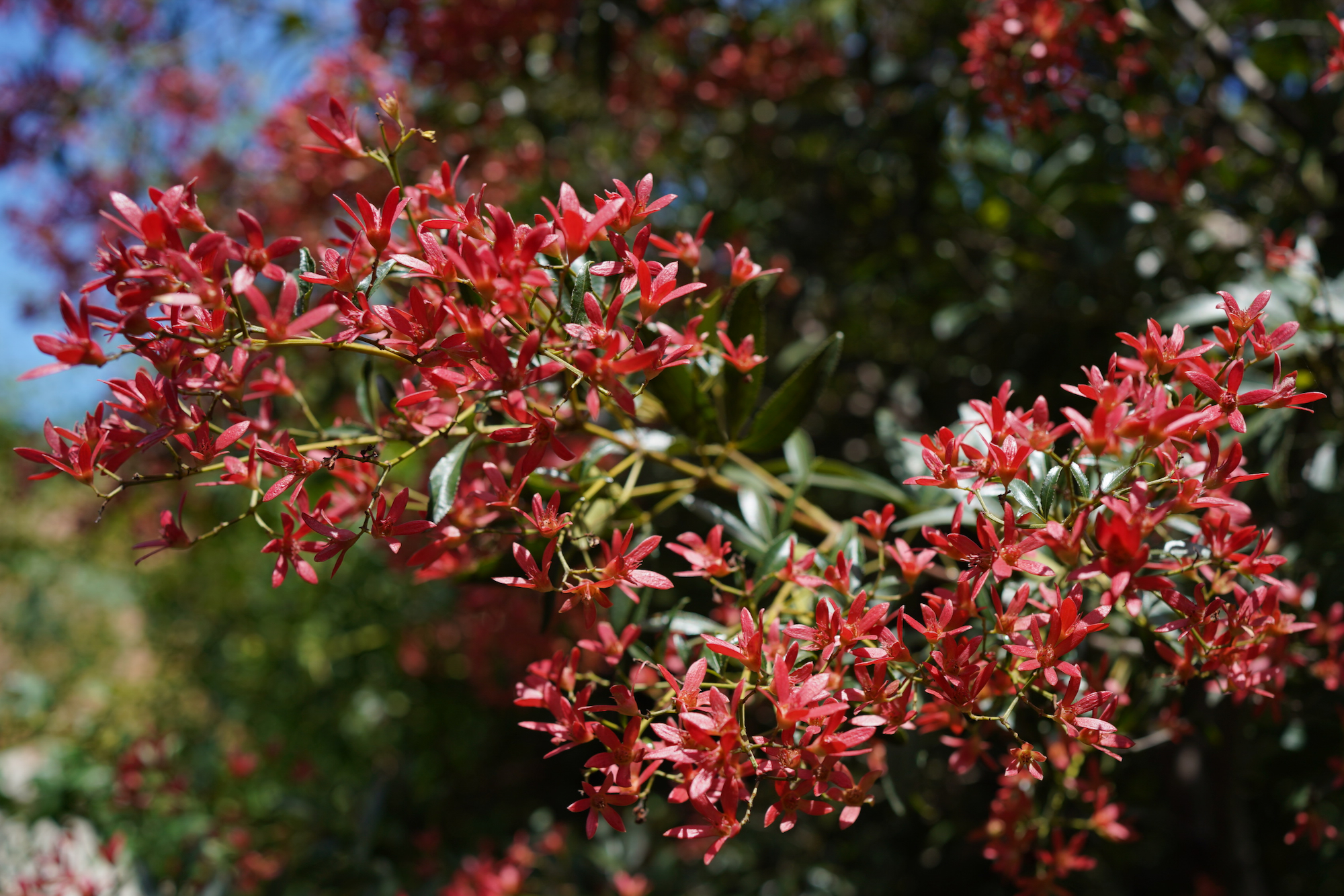
You can prune after flowering to keep the foliage dense from year to year, the best way to do this is by cutting large bunches of the red calyxs for Christmas 😉
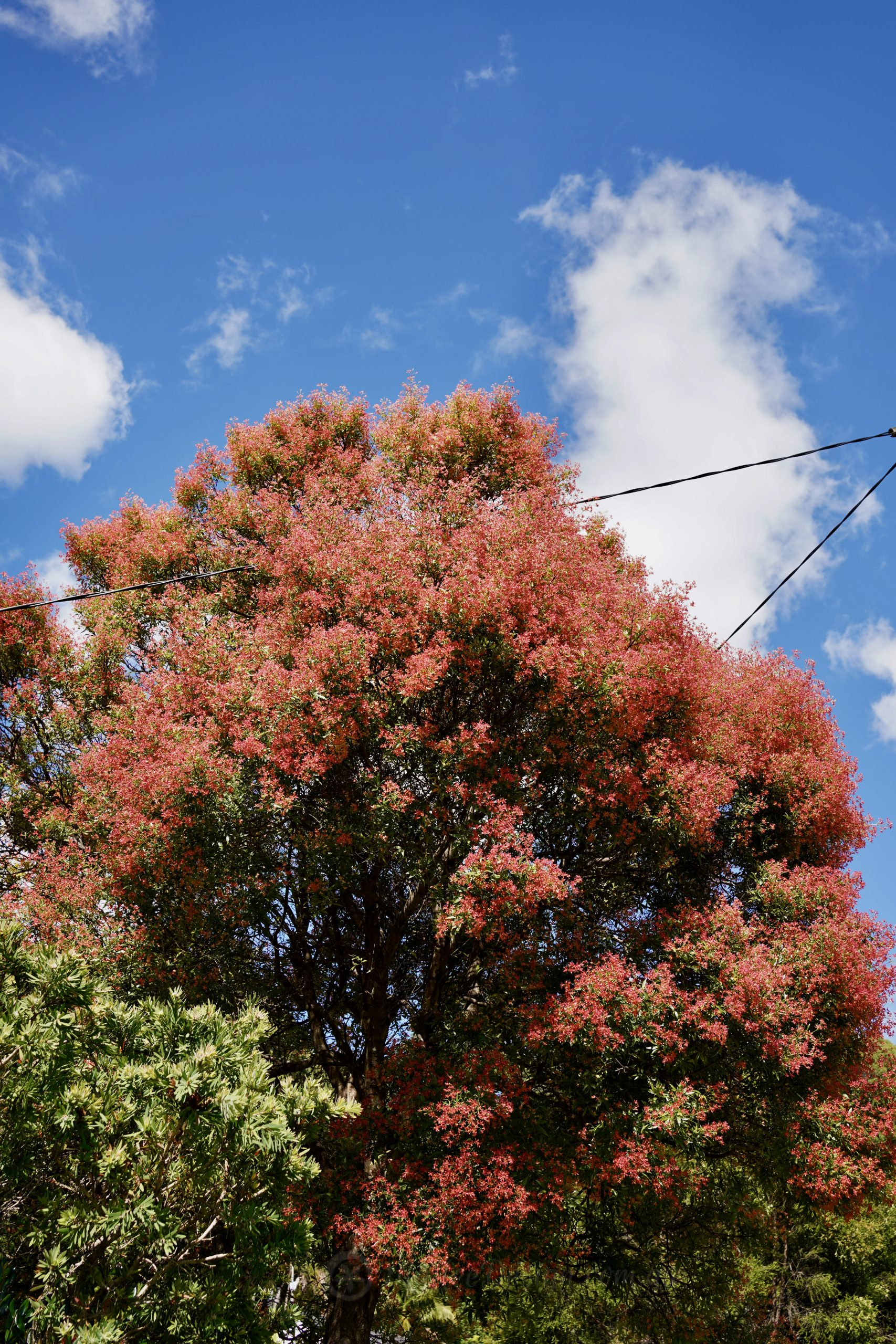
I hope everyone enjoys the festive season and manages to do a NSW Christmas Bush spotting, it is good for the soul x
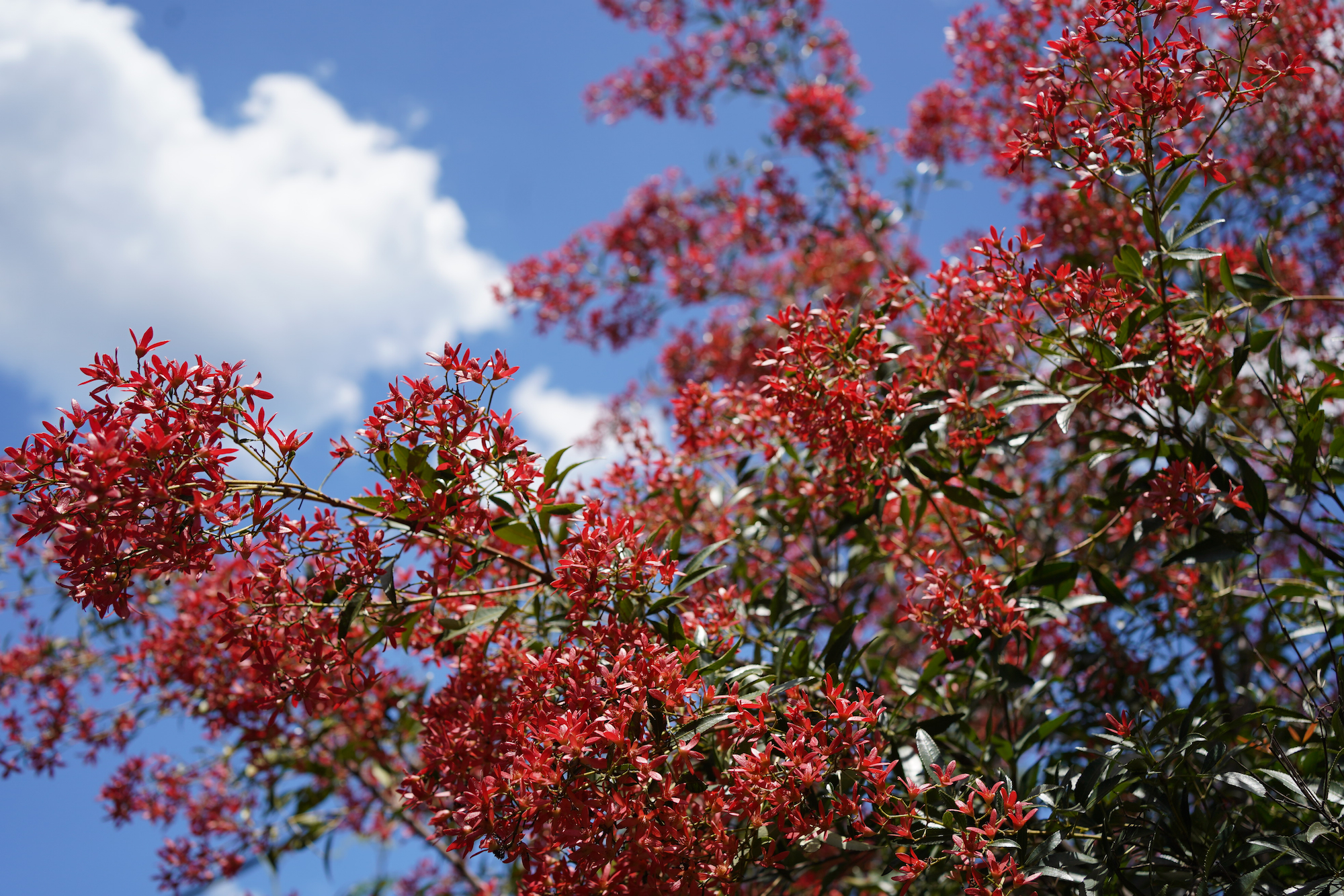


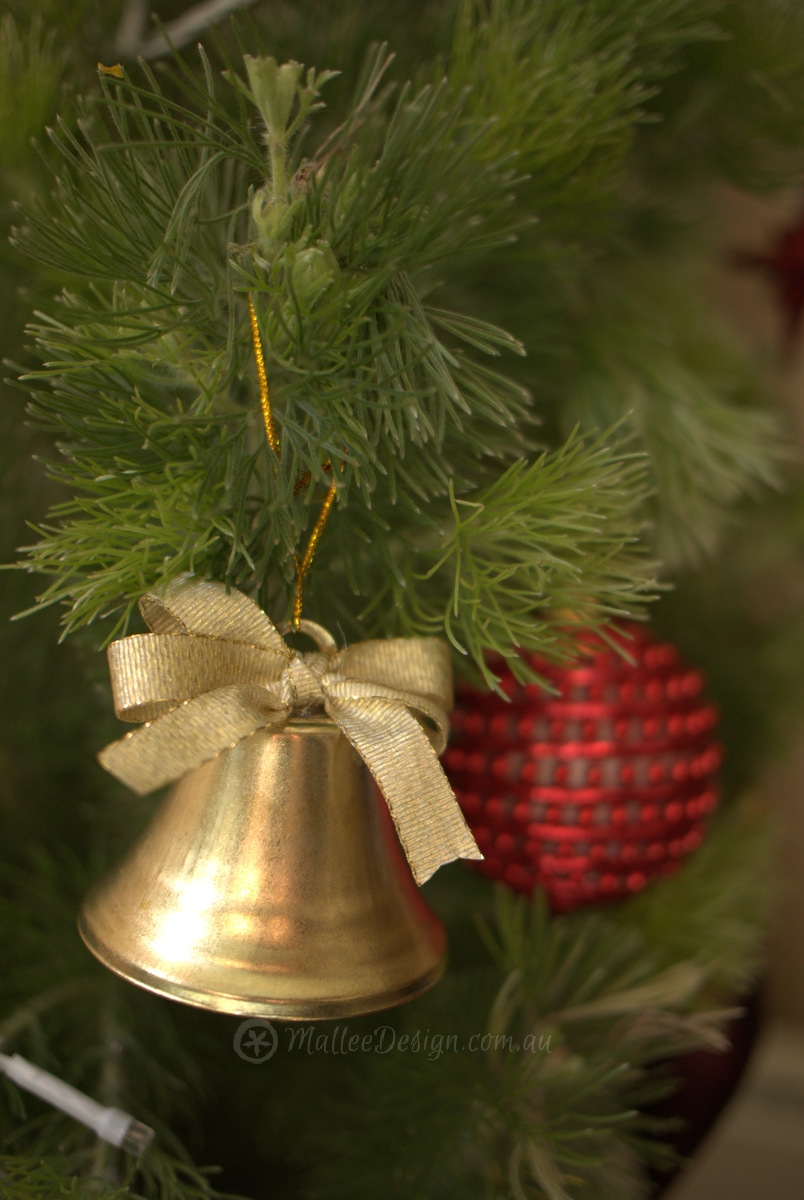
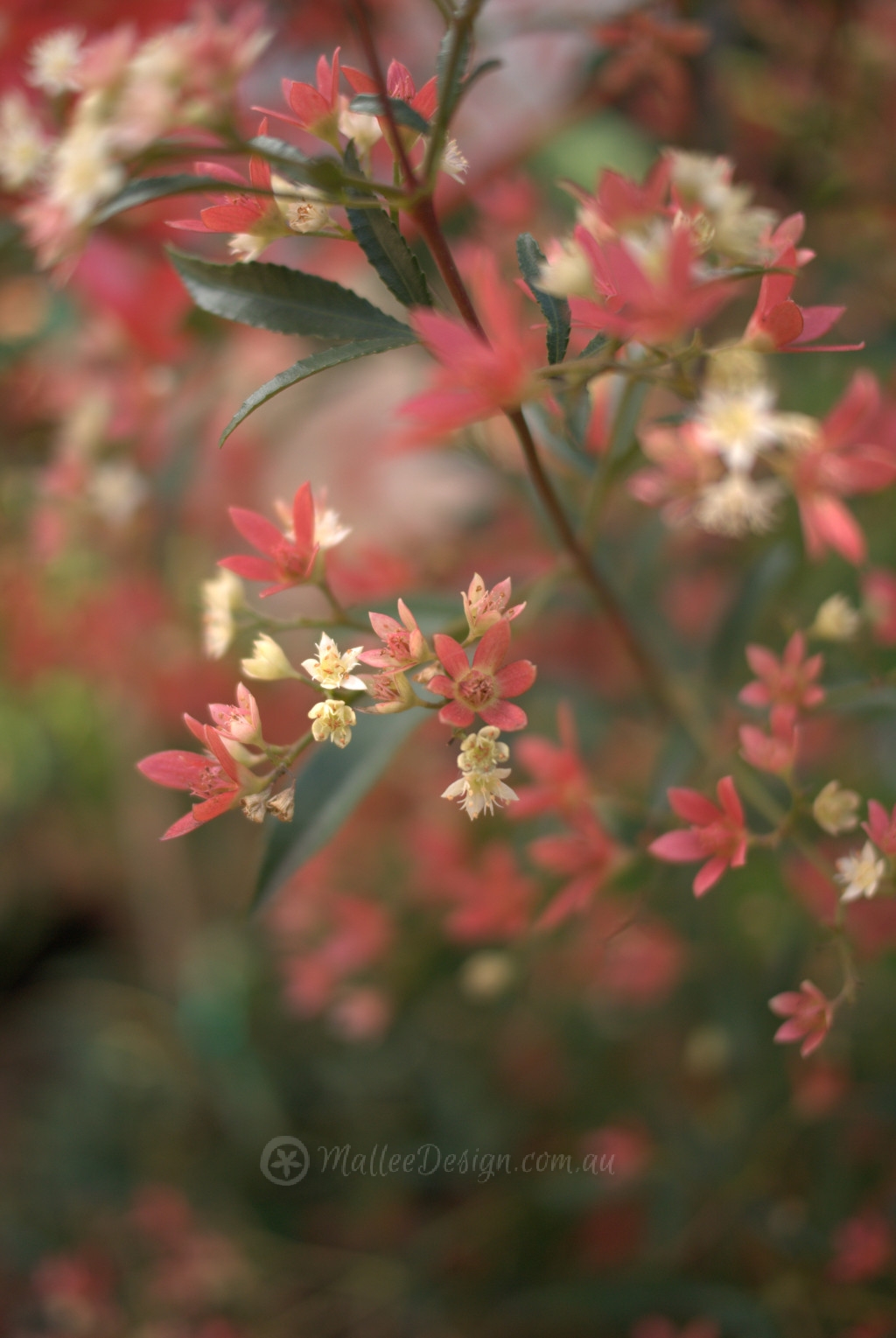
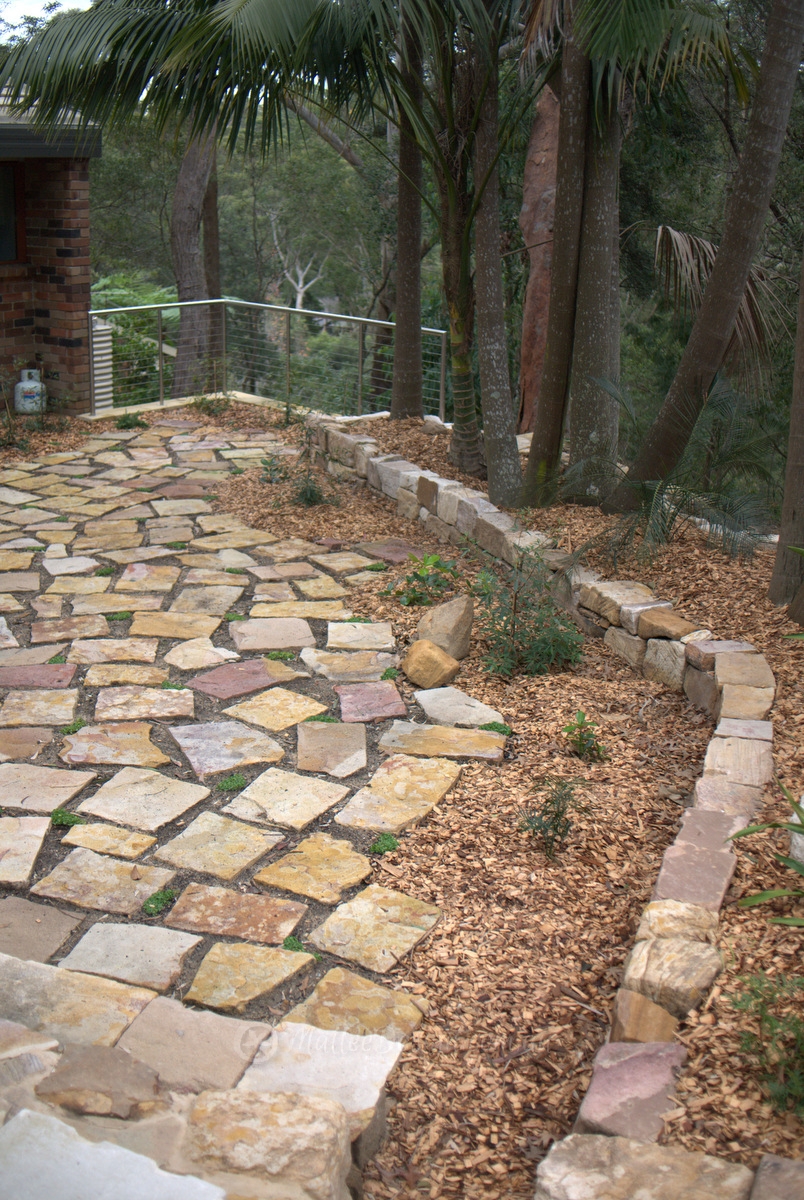
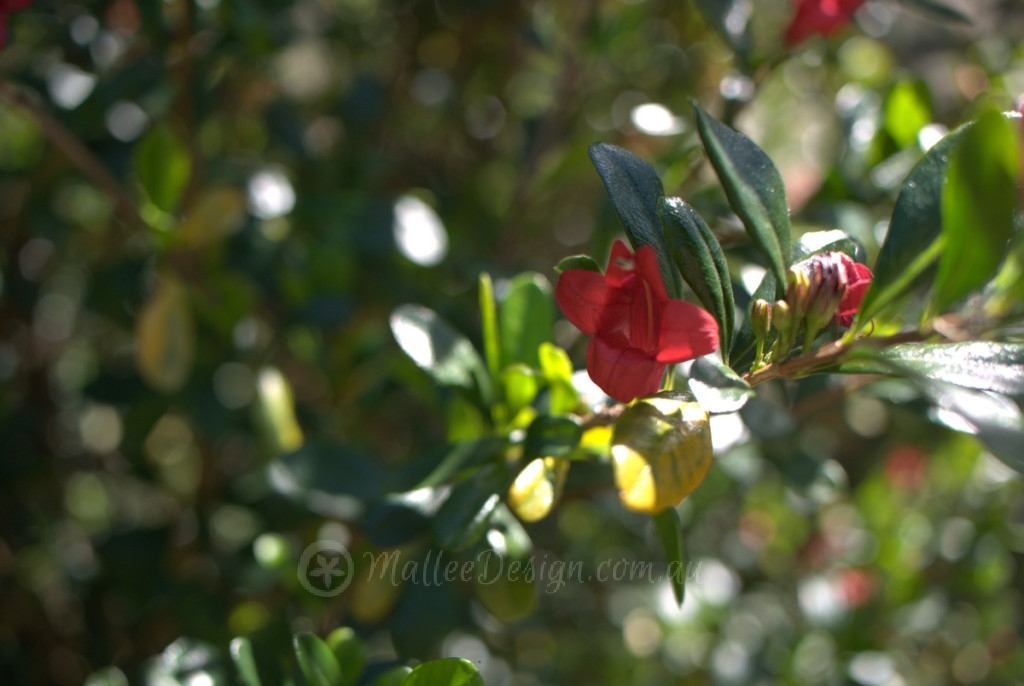
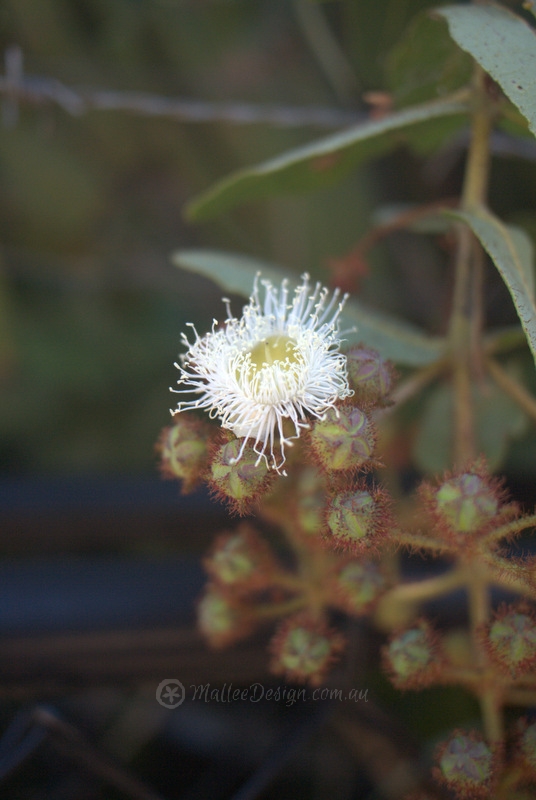
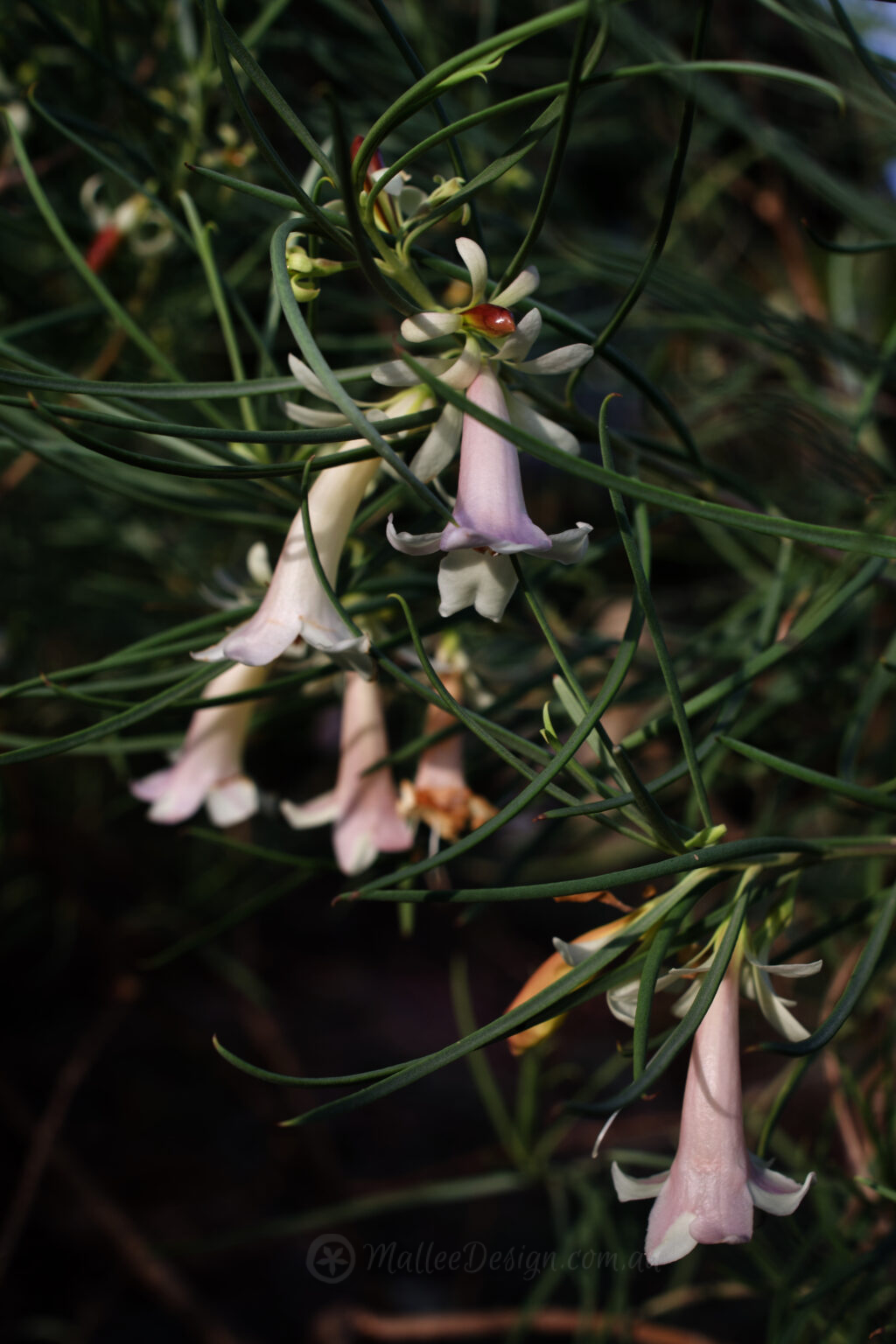
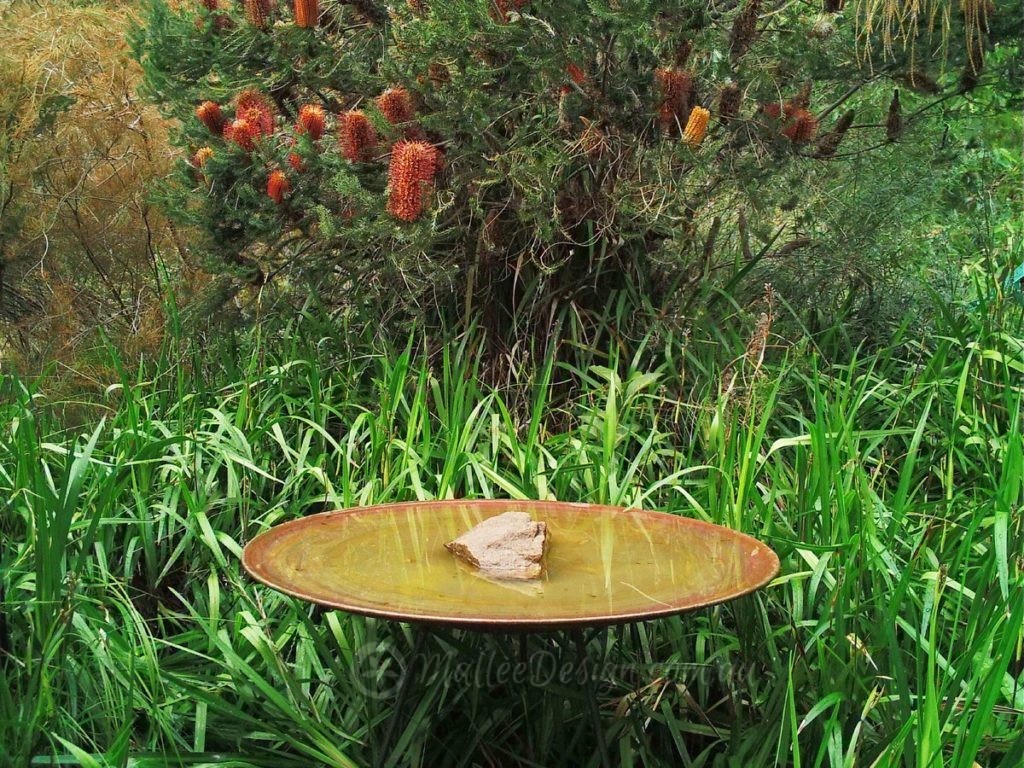
Leave a Reply